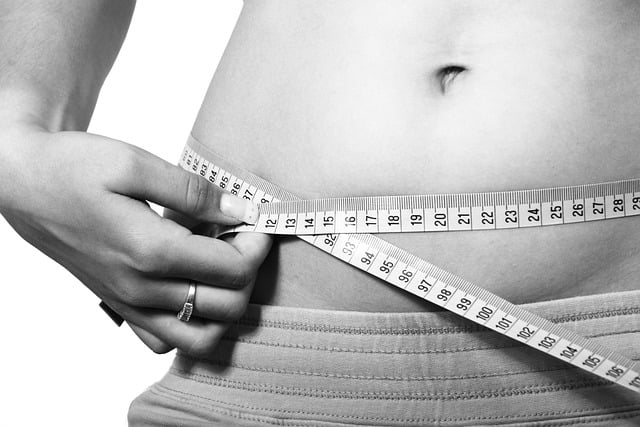Targeted fat loss focuses on reducing fat in specific areas like the abdomen or thighs, using a combination of balanced diets, strategic exercises (including HIIT), and tailored strategies based on individual metabolic rates, age, gender, genetics, and health conditions. A personalized plan that includes assessing lifestyle factors, setting goals, and incorporating complex carbohydrates, healthy fats, and regular exercise is key to successful long-term targeted fat loss. Progress tracking through measurements, photos, and community support helps maintain motivation and allows for adjustments as needed.
“Discover the secrets to effective fat reduction with our comprehensive guide. Understanding targeted fat loss is key to achieving your weight management goals. We explore the science behind this concept, revealing how it differs from general weight loss. Factors influencing success include age, gender, and lifestyle. Learn to design a personalized plan, incorporating evidence-based nutritional strategies and high-intensity exercise routines. Track progress with precise metrics and stay motivated for lasting results.”
Understanding Targeted Fat Loss: Unveiling the Concept

Many people confuse general weight loss with targeted fat loss, but they’re two very different concepts. When we talk about targeted fat loss, we’re focusing on reducing fat in specific areas of the body, like the abdomen, hips, or thighs. This isn’t about losing weight everywhere equally; it’s about sculpting your figure by targeting problematic zones.
Understanding targeted fat loss involves recognizing that our bodies don’t evenly distribute fat. Hormones, genetics, and lifestyle factors play a role in where fat accumulates. Therefore, simply cutting calories won’t always lead to the desired results. Effective targeted fat reduction programs combine a balanced diet, strategic exercise, and sometimes even specialized treatments to stimulate metabolism, boost fat burn, and help you achieve the sculpted look you desire.
Factors Influencing Effective Fat Reduction Programs

Several factors play a pivotal role in designing effective fat reduction programs, with targeted fat loss being a key focus. Firstly, understanding an individual’s metabolic rate and how it responds to various exercises and diets is essential. Different body types have distinct metabolic profiles, influencing the type and intensity of workouts required for optimal fat burning. For instance, high-intensity interval training (HIIT) can be highly effective in boosting metabolism for short periods, aiding targeted fat loss.
Moreover, factors like age, gender, genetics, and overall health significantly impact weight loss outcomes. As we age, our metabolic rate naturally slows down, making it more challenging to lose fat. Gender also plays a role, as hormonal differences can influence fat distribution and metabolism. Genetic predispositions can make some individuals more prone to storing fat in certain areas, requiring tailored strategies for targeted fat loss. Additionally, health conditions like diabetes or hypothyroidism may necessitate specialized dietary considerations for safe and effective weight management.
Designing a Personalized Fat Loss Plan

Designing a personalized fat loss plan is a game-changer for anyone looking to achieve their ideal weight and body composition. It’s all about understanding that every individual has unique needs and goals. A targeted fat loss program starts with assessing your current lifestyle, including diet, exercise routine, sleep patterns, and stress levels. This evaluation helps identify areas of improvement and sets the foundation for a tailored strategy.
For instance, some people may excel with a high-intensity interval training (HIIT) approach, combining short bursts of intense activity with periods of rest, while others might find success through a combination of strength training, steady-state cardio, and a balanced, calorie-controlled diet. Incorporating personalized goals, such as specific macronutrient ratios or focus on certain muscle groups, ensures the plan aligns with your aspirations and makes fat loss more sustainable and effective.
Nutritional Strategies for Sustainable Weight Management

Achieving targeted fat loss requires a strategic approach, and one of the cornerstones is adopting nutritional strategies that promote sustainable weight management. It’s about more than just calorie counting; it’s about understanding your body’s needs and fueling it with the right foods. A balanced diet rich in lean proteins, whole grains, fruits, and vegetables sets the stage for successful fat reduction. These foods not only provide essential nutrients but also help manage hunger, stabilize blood sugar levels, and promote a healthy metabolism.
Incorporating mindfully selected carbohydrates, such as complex carbs from legumes and whole grains, can aid in maintaining energy levels throughout the day, preventing cravings and overeating. Additionally, incorporating healthy fats like avocados, nuts, and olive oil not only supports satiety but also contributes to overall health. This strategic approach to nutrition is key to achieving long-term targeted fat loss while ensuring your body receives the fuel it needs to thrive.
Incorporating Exercise for Optimal Fat Burn

Incorporating regular exercise is a fundamental strategy for achieving targeted fat loss. Cardio workouts, such as running, cycling, or swimming, are excellent for burning calories and reducing overall body fat. High-intensity interval training (HIIT), in particular, has gained popularity due to its efficiency in promoting rapid fat loss. This type of training alternates between intense bursts of activity and brief recovery periods, maximizing metabolic rates and continuing to burn calories even after the workout ends.
Additionally, strength training should be an integral part of any fat reduction program. Building muscle through resistance exercises like weightlifting or bodyweight exercises not only enhances metabolism by increasing muscle mass but also helps to burn more fat throughout the day. Targeted exercises that isolate specific problem areas, such as abdominals, legs, or arms, can provide visible results when combined with a balanced diet and consistent effort.
Tracking Progress and Staying Motivated

Tracking your progress is a crucial part of any fat reduction program, as it helps to keep you motivated and focused on your goals. Regularly recording measurements, such as waist circumference or body composition percentage, allows you to visually see the changes in your body. This can be done using simple measuring tools or more advanced techniques like body fat analyzers. Additionally, taking before-and-after photos can provide a powerful visual reminder of your achievements.
Staying motivated throughout your journey is essential for achieving targeted fat loss. Set realistic expectations and celebrate milestones along the way to maintain your momentum. Consider finding an accountability partner or joining a fitness community to share your progress and gain support. By regularly assessing your achievements and adjusting your strategies as needed, you’ll be well on your way to reaching your fat reduction goals.
